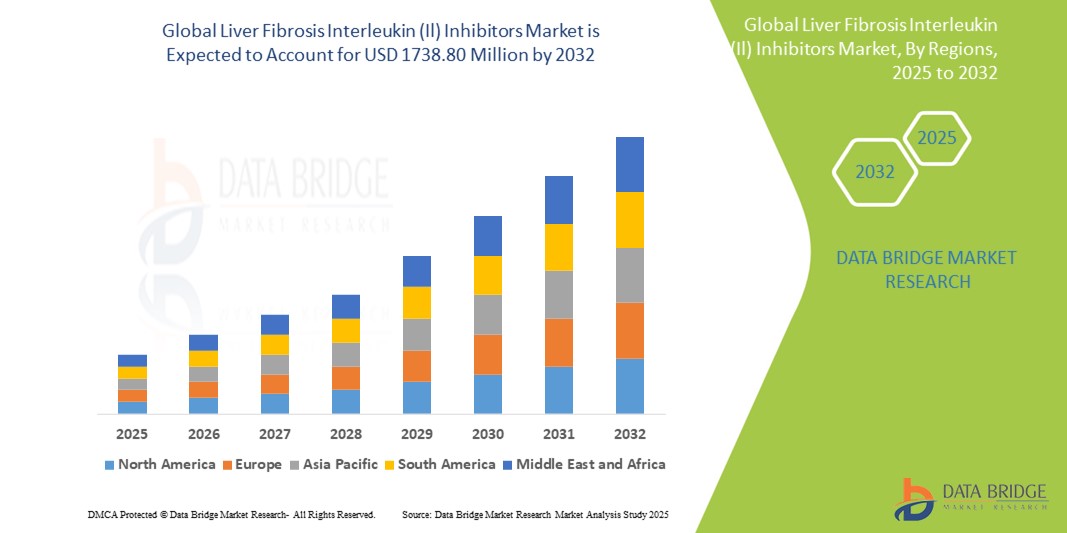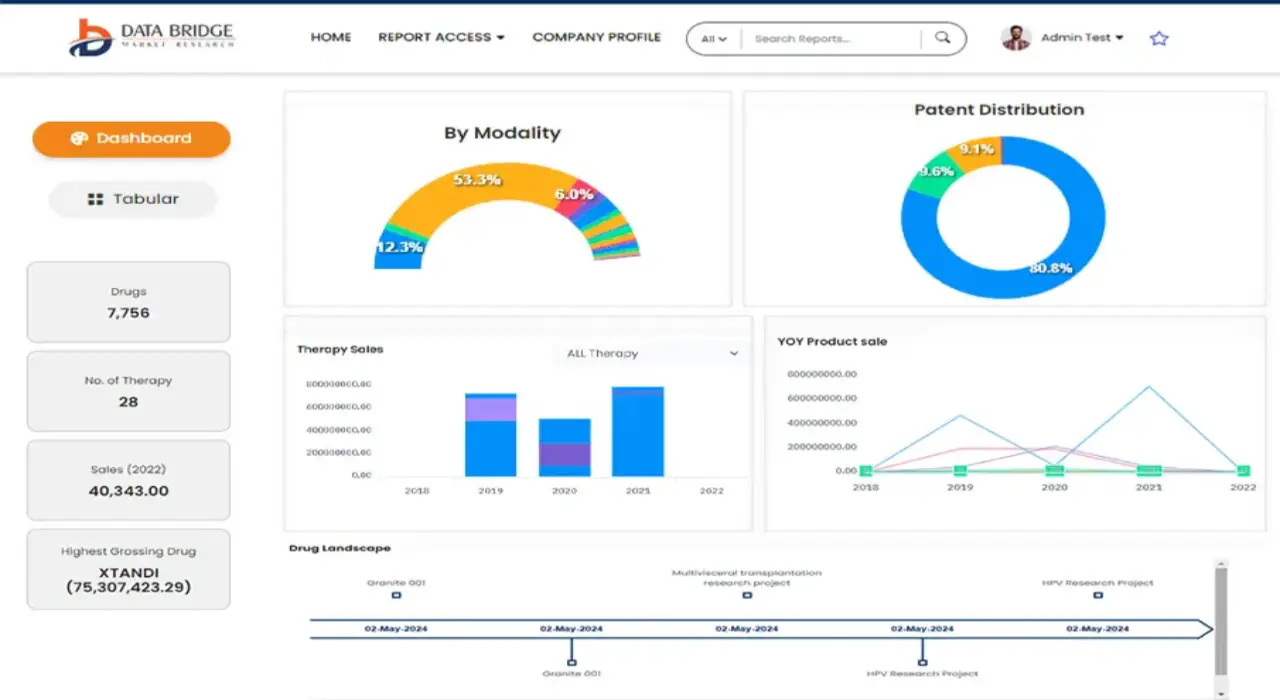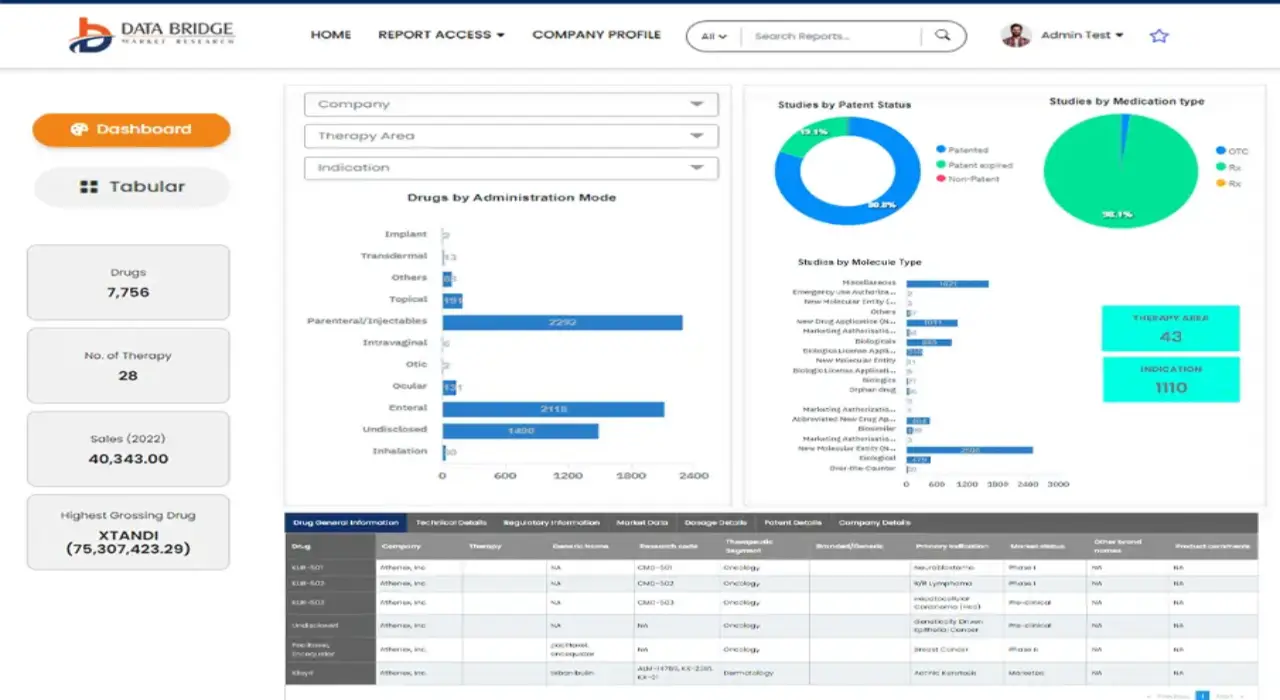Global Liver Fibrosis Interleukin Il Inhibitors Market
Market Size in USD Million
CAGR :
% 
 USD
776.62 Million
USD
1,738.80 Million
2024
2032
USD
776.62 Million
USD
1,738.80 Million
2024
2032
| 2025 –2032 | |
| USD 776.62 Million | |
| USD 1,738.80 Million | |
|
|
|
Global Liver Fibrosis Interleukin (Il) Inhibitors Market Segmentation, By Interleukin Type (Interleukin-1 beta (IL-1β), Interleukin-36 alpha (IL-36α), Interleukin-36 gamma (IL-36γ), and Others), Disease Type (Hepatitis, Autoimmune Diseases, Non-alcoholic Fatty Liver Disease (NAFLD), Cancer, Genetic Disorders, and Others), Route of Administration (Oral, Intravenous, Intramuscular, and Others), End User (Hospitals, Specialty Clinics, and Others) - Industry Trends and Forecast to 2032
Liver Fibrosis Interleukin (Il) Inhibitors Market Size
- The global liver fibrosis interleukin (Il) inhibitors market was valued at USD 776.62 million in 2024 and is expected to reach USD 1738.80 million by 2032
- During the forecast period of 2025 to 2032 the market is likely to grow at a CAGR of 10.60%, primarily driven by the rising disease prevalence and advancements
- This growth is driven by factors such as increasing prevalence of chronic liver diseases and growing focus on targeted and biologic therapies
Liver Fibrosis Interleukin (Il) Inhibitors Market Analysis
- Liver Fibrosis Interleukin (Il) inhibitors are a class of therapeutic agents designed to block specific interleukins involved in the inflammatory and fibrotic processes of the liver. These inhibitors target cytokines such as IL-6 and IL-13, which play critical roles in the progression of liver fibrosis — a condition characterized by excessive accumulation of extracellular matrix proteins that leads to scarring and impaired liver function
- The global liver fibrosis interleukin (Il) inhibitors market is experiencing notable growth, projected to expand at a compound annual growth rate (CAGR) of 8.7% over the coming years. This growth is primarily driven by the rising prevalence of chronic liver diseases, such as hepatitis and non-alcoholic steatohepatitis (NASH), as well as increasing awareness and advancements in biotechnology
- For instance, in 2024, several promising clinical trials for IL inhibitors demonstrated positive outcomes, fueling optimism among healthcare providers and investors. Moreover, the surge in research funding and collaborations between pharmaceutical companies and research institutes further accelerates market development
- North America currently dominates the market due to its advanced healthcare infrastructure and high disease awareness, while the Asia-Pacific region is expected to witness the fastest growth owing to increasing healthcare investments and a rising patient pool
Report Scope and Liver Fibrosis Interleukin (Il) Inhibitors Market Segmentation
|
Attributes |
Liver Fibrosis Interleukin (Il) Inhibitors Key Market Insights |
|
Segments Covered |
|
|
Countries Covered |
North America
Europe
Asia-Pacific
Middle East and Africa
South America
|
|
Key Market Players |
|
|
Market Opportunities |
|
|
Value Added Data Infosets |
In addition to the insights on market scenarios such as market value, growth rate, segmentation, geographical coverage, and major players, the market reports curated by the Data Bridge Market Research also include depth expert analysis, patient epidemiology, pipeline analysis, pricing analysis, and regulatory framework. |
Liver Fibrosis Interleukin (Il) Inhibitors Market Trends
“Increasing Focus on Combination Therapies”
- One key trend in the Liver Fibrosis Interleukin (Il) inhibitors market is the increasing focus on combination therapies. Researchers and pharmaceutical companies are exploring the potential of combining IL inhibitors with other antifibrotic agents or immunomodulators to enhance therapeutic outcomes
- This approach aims to target multiple pathways involved in liver fibrosis progression, potentially improving efficacy and reducing disease relapse
- For instance, in 2024, a leading biopharmaceutical company initiated a Phase II clinical trial combining an IL-13 inhibitor with an antifibrotic compound, showing early signs of improved liver function in patients with advanced fibrosis
- Such developments reflect the growing understanding that liver fibrosis is a multifactorial disease, requiring multi-targeted strategies for effective management. As clinical evidence supporting combination therapies continues to grow, this trend is expected to reshape treatment paradigms, attract more investments, and drive innovation within the liver fibrosis treatment landscape, ultimately benefiting patients worldwide
Liver Fibrosis Interleukin (Il) Inhibitors Market Dynamics
Driver
“Increasing Prevalence of Chronic Liver Diseases”
- The increasing prevalence of chronic liver diseases such as hepatitis B and C, alcoholic liver disease, and non-alcoholic steatohepatitis (NASH) is significantly driving the demand for liver fibrosis interleukin (Il) inhibitors
- As lifestyle factors such as poor diet, obesity, and excessive alcohol consumption continue to rise globally, the incidence of liver fibrosis and related complications is increasing, creating a greater need for effective therapeutic solutions
- NASH, in particular, is emerging as a leading cause of liver fibrosis worldwide, intensifying the urgency for innovative treatments that can target underlying inflammatory pathways
- Ongoing advancements in immunology and biologics further highlight the growing potential of IL inhibitors, which can specifically block key interleukins involved in liver inflammation and fibrosis progression
- As more patients are diagnosed at earlier stages of liver fibrosis due to improved screening methods, the demand for targeted treatments such as IL inhibitors is expected to grow, offering promising outcomes and slowing disease progression
For instance,
- In March 2024, according to an article published by the National Center for Biotechnology Information, the global prevalence of non-alcoholic fatty liver disease (NAFLD), a precursor to NASH, has reached approximately 32%, significantly contributing to the rising burden of liver fibrosis and driving the need for effective treatments such as interleukin inhibitors
- As a result of the increasing prevalence of chronic liver diseases and improved disease detection, there is a significant rise in the demand for liver fibrosis interleukin (Il) inhibitors
Opportunity
“Increasing Adoption of Precision Medicine and Biomarker-Based Therapies”
- The increasing adoption of precision medicine and biomarker-based therapies is opening new opportunities for the development of targeted liver fibrosis interleukin (Il) inhibitors
- Advancements in genomic profiling and molecular diagnostics enable the identification of patient subgroups most likely to respond to specific IL inhibitors, thereby improving treatment outcomes
- In addition, companion diagnostics can assist healthcare providers in monitoring disease progression and therapeutic response, allowing for more personalized and effective treatment plans
For instance,
- In February 2024, according to an article published in the Journal of Hepatology, researchers successfully identified specific biomarkers linked to the progression of liver fibrosis, paving the way for the development of precision IL-targeted therapies. This breakthrough allows pharmaceutical companies to design more effective inhibitors tailored to individual patient profiles, enhancing efficacy and reducing side effects
- In October 2023, according to an article by the National Center for Biotechnology Information, a clinical study on IL-6 inhibitors demonstrated that patients selected through biomarker screening showed a 45% higher improvement rate in liver function compared to non-targeted treatments, highlighting the potential of personalized approaches in improving therapeutic outcomes
- The integration of biomarker-based approaches in the development of IL inhibitors offers the potential for earlier disease intervention, optimized dosing strategies, and ultimately, better patient outcomes in the management of liver fibrosis
Restraint/Challenge
“High Cost of Developing and Manufacturing Liver Fibrosis Interleukin (Il) Inhibitors”
- The high cost of developing and manufacturing liver fibrosis interleukin (Il) inhibitors poses a significant challenge for the market, particularly impacting accessibility and affordability for patients worldwide
- These inhibitors, which are often biologic therapies, require complex research, clinical trials, and production processes, leading to elevated prices that can exceed several thousand dollars per treatment cycle
- This substantial financial burden can limit the availability of these therapies, especially in low- and middle-income countries, where healthcare budgets and insurance coverage are often constrained
For instance,
- In December 2024, according to an article published by the National Center for Biotechnology Information, the high production cost of biologic drugs, including IL inhibitors, remains a critical barrier, as the complexity of biologic manufacturing processes contributes to pricing that limits patient access
- In August 2023, according to the Journal of Pharmaceutical Policy and Practice, healthcare providers in developing regions reported challenges in integrating expensive IL-targeted therapies into standard care protocols, as budget constraints prevent widespread adoption despite clinical efficacy
- Consequently, these financial limitations can lead to disparities in treatment availability, slowing the overall growth and patient reach of the liver fibrosis interleukin (Il) inhibitors market
Liver Fibrosis Interleukin (Il) Inhibitors Market Scope
The market is segmented on the basis of interleukin type, disease type, route of administration, and end user.
|
Segmentation |
Sub-Segmentation |
|
By Interleukin Type |
|
|
By Disease Type |
|
|
By Route of Administration |
|
|
By End User |
|
Liver Fibrosis Interleukin (Il) Inhibitors Market Regional Analysis
“North America is the Dominant Region in the Liver Fibrosis Interleukin (Il) Inhibitors Market”
- North America holds the dominant position in the liver fibrosis interleukin (Il) inhibitors market. The region's leadership is primarily attributed to the high prevalence of liver diseases such as non-alcoholic steatohepatitis (NASH) and hepatitis C, which significantly drive the demand for advanced therapies
- In addition, well-established healthcare infrastructure, strong presence of key pharmaceutical companies, and robust research and development activities contribute to market dominance
- U.S., in particular, accounts for a major share due to its substantial investment in biotechnology and increasing clinical trials targeting interleukin pathways for liver fibrosis treatment
- For instance, in 2023, several U.S.-based biopharmaceutical firms accelerated their pipeline development for IL inhibitors, focusing on therapies that target inflammation and fibrogenesis in liver tissues
- Furthermore, supportive regulatory policies and growing awareness among healthcare providers and patients about early diagnosis and treatment options continue to bolster market growth in the region
“Asia-Pacific is Projected to Register the Highest Growth Rate”
- Asia-Pacific is projected to register the highest growth rate in the liver fibrosis interleukin (Il) inhibitors market. This growth is fueled by rising incidences of liver diseases such as hepatitis B and C, increasing alcohol consumption, and growing obesity rates leading to non-alcoholic fatty liver disease (NAFLD)
- In addition, improving healthcare infrastructure, expanding access to advanced therapies, and increasing government initiatives to raise awareness about liver health are boosting market demand. Countries such as China, India, and Japan are witnessing a surge in clinical research and approvals for innovative treatments
- China is projected to register the highest growth rate in the Liver Fibrosis Interleukin (Il) Inhibitors Market, driven by rising liver disease prevalence, expanding healthcare infrastructure, and accelerating clinical research
- For instance, in 2024, China expanded its clinical trial network for liver fibrosis therapies, accelerating drug development and improving patient access to cutting-edge IL inhibitor treatments
Liver Fibrosis Interleukin (Il) Inhibitors Market Share
The market competitive landscape provides details by competitor. Details included are company overview, company financials, revenue generated, market potential, investment in research and development, new market initiatives, global presence, production sites and facilities, production capacities, company strengths and weaknesses, product launch, product width and breadth, application dominance. The above data points provided are only related to the companies' focus related to market.
The Major Market Leaders Operating in the Market Are:
- Boehringer Ingelheim International GmbH (Germany)
- Gilead Sciences, Inc. (U.S.)
- Gyre Therapeutics, Inc. (U.S.)
- Galectin Therapeutics Inc. (U.S.)
- Hepion Pharmaceuticals (U.S.)
- Intercept Pharmaceuticals, Inc. (U.S.)
- Ionis Pharmaceuticals (U.S.)
- Inventiva (France)
- Lilly (U.S.)
- Madrigal Pharmaceuticals (U.S.)
- Merck & Co., Inc. (U.S.)
- Novo Nordisk A/S (Denmark)
- Novartis AG (Switzerland)
- Pfizer Inc. (U.S.)
- Pharmaxis Group USA (U.S.)
- Rivus Pharmaceuticals (U.S.)
- Torrent Pharmaceuticals Ltd. (India)
- VBShilpa (India)
- ZEALAND PHARMA (Denmark)
- Zydus Group (India)
- ZyVersa Therapeutics, Inc. (U.S.)
Latest Developments in Global Liver Fibrosis Interleukin (Il) Inhibitors Market
- In July 2023, ZyVersa Therapeutics, Inc. announced the publication of a research article in the peer-reviewed journal Hepatology, highlighting the involvement of NLRP3 inflammasome-mediated IL-18 in liver fibrosis progression. The study, titled "Interleukin-18 signaling promotes activation of hepatic stellate cells in mouse liver fibrosis," examined serum IL-18 levels in patients with liver fibrosis or cirrhosis. In addition, the researchers conducted experiments using three distinct mouse models of liver fibrosis to further explore the role of IL-18 signaling in activating hepatic stellate cells
SKU-
Get online access to the report on the World's First Market Intelligence Cloud
- Interactive Data Analysis Dashboard
- Company Analysis Dashboard for high growth potential opportunities
- Research Analyst Access for customization & queries
- Competitor Analysis with Interactive dashboard
- Latest News, Updates & Trend analysis
- Harness the Power of Benchmark Analysis for Comprehensive Competitor Tracking
Research Methodology
Data collection and base year analysis are done using data collection modules with large sample sizes. The stage includes obtaining market information or related data through various sources and strategies. It includes examining and planning all the data acquired from the past in advance. It likewise envelops the examination of information inconsistencies seen across different information sources. The market data is analysed and estimated using market statistical and coherent models. Also, market share analysis and key trend analysis are the major success factors in the market report. To know more, please request an analyst call or drop down your inquiry.
The key research methodology used by DBMR research team is data triangulation which involves data mining, analysis of the impact of data variables on the market and primary (industry expert) validation. Data models include Vendor Positioning Grid, Market Time Line Analysis, Market Overview and Guide, Company Positioning Grid, Patent Analysis, Pricing Analysis, Company Market Share Analysis, Standards of Measurement, Global versus Regional and Vendor Share Analysis. To know more about the research methodology, drop in an inquiry to speak to our industry experts.
Customization Available
Data Bridge Market Research is a leader in advanced formative research. We take pride in servicing our existing and new customers with data and analysis that match and suits their goal. The report can be customized to include price trend analysis of target brands understanding the market for additional countries (ask for the list of countries), clinical trial results data, literature review, refurbished market and product base analysis. Market analysis of target competitors can be analyzed from technology-based analysis to market portfolio strategies. We can add as many competitors that you require data about in the format and data style you are looking for. Our team of analysts can also provide you data in crude raw excel files pivot tables (Fact book) or can assist you in creating presentations from the data sets available in the report.













